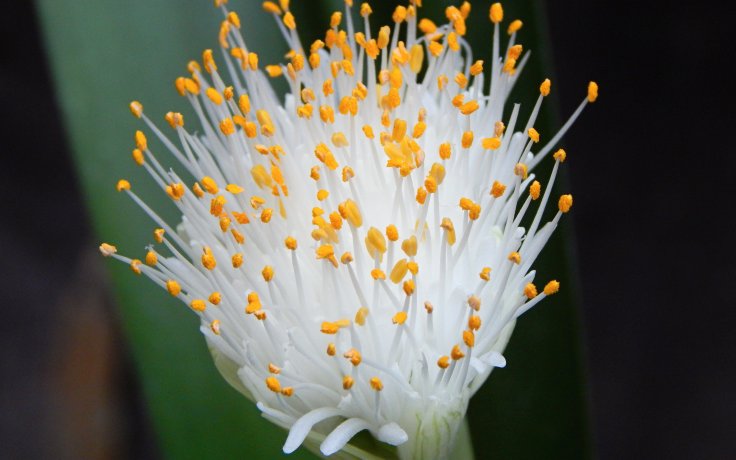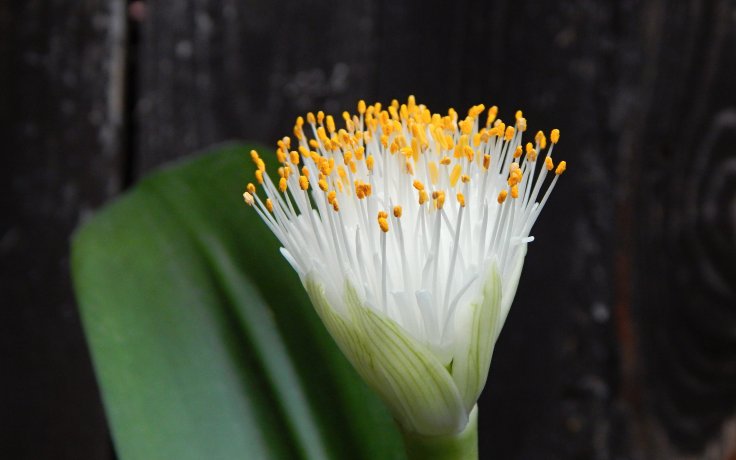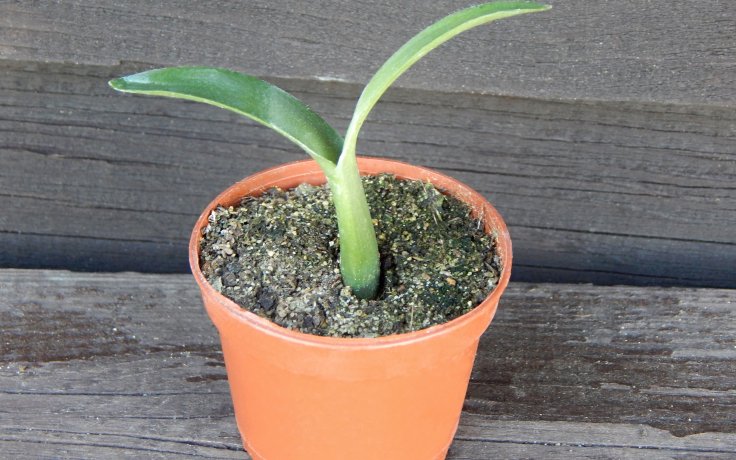- Home
- Succulents
- Haemanthus
- Haemanthus albiflos





Haemanthus albiflos
A semi-shady to shady location is ideal for the plant.
Always water a few days after the substrate has dried out. In winter, limit watering.
It can tolerate -1.1 °C in the short term. However, the plant is not hardy.
Also known as elephant's ear or bloodflower in Czech, it is a favourite houseplant of our grandmothers and has been grown in Czech households since time immemorial.
Haemanthus albiflos is a popular houseplant that has been cultivated in Czech households since ancient times. Because of this, it is also sometimes called the plant of our grandmothers. It can also be found under the names Haemanthus virescens var. albiflos, Leucodesmis albiflos, where albiflos refers to the white colour of the flowers. Due to the appearance of the flowers, we can also find the nickname Paint Brush.
Its dark green, evergreen, tongue-shaped leaves are 25 cm long. They give the plant an elegant appearance. The flattened onion-like base from which the leaves grow is a characteristic feature of the Haemanthus genus.
The plant produces a compact flower bud at the top of an upright, thick flower stalk that can reach up to 35 cm long and 1,5 cm in diameter. The white flowers grow with elongated white stamens that hold distinctive yellow anthers. The fruit is a red berry. Haemanthus albiflos flowers in late summer or with the onset of autumn.
The white-flowered plant grows quite large and can be fertilised with a houseplant fertiliser if deemed appropriate. The plant prefers a cooler overwintering period (5-10 °C), where it will stay almost dry from autumn to spring. It can also survive on a windowsill inside a heated apartment. It is an unpretentious and hardy plant that can tolerate neglect. It is quite difficult to kill, which is why it is also suitable for the completely anti-grower. In African folk medicine it is used to combat coughs. This plant with a long tradition of cultivation in the Czech Republic is at its most beautiful during the flowering season. The white 'brush' catches the eye from a distance and gives the plant a unique character.